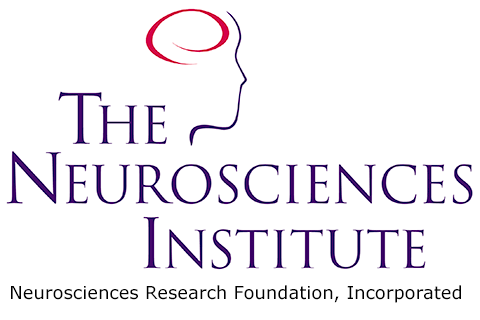
History of The Neurosciences Institute
The Neurosciences Institute was a non-profit scientific research organization dedicated to learning about the brain for the benefit of humankind. Founded by the late Nobel Laureate Gerald M. Edelman, the Institute focused its research on the principles underlying how we perceive and act upon the world, how we learn and remember, and how consciousness arises.
The Institute was dedicated to increasing knowledge about how the brain works at the most fundamental levels. By that is meant defining the fundamental principles of anatomy and physiology that enable the brain and nervous system to carry out their myriad functions. Although many facts are known about the nervous system from the molecular to the cellular to the tissue levels, and new information is being discovered every day, a generally agreed-upon set of basic overall principles that would explain how we see, how we move, or how we are conscious remains elusive.
Over four decades, researchers at the Institute developed a theoretical approach called synthetic neural modeling, where large-scale computer simulations of nervous systems based on realistic approximations of anatomical and physiological data are used to learn about the brain. The functions of the nervous system arise only as it interacts with the rest of the body and as an animal engages in a behavior in the world, so the synthetic neural models were engaged with behavioral tasks and embodied them in robot-like devices. These brain-based devices (BBDs) learn from their own experience in their environment, just like humans do. They have been used to study the neural bases of perception, operant and fear conditioning, episodic and spatial memory, navigation, and motor control. The approach has yielded a number of important insights and led to predictions that have been confirmed in studies of living animals.
Dr. Edelman elaborated a broad general theory of how the brain works beginning in 1979. Key aspects of his Theory of Neuronal Group Selection (also called Neural Darwinism) have been confirmed experimentally in a number of laboratories around the world. Much of the Institute's approach was based on this theory, which uses principles of evolution by selection known to be applicable to biology in general and also, for example, to the immune system.
On October 1, 2012, The Neurosciences Institute moved to new quarters in the village of La Jolla, where a vigorous theoretical research program continued. The focus was on understanding how consciousness arises from the activity of the nervous system, one of the most challenging subjects in neuroscience.
From 1995 until 2012, the Institute also carried out laboratory research in a number of areas including molecular biology of gene regulation, cellular and systems neurophysiology, neural plasticity, genetics of behavior, syntactic processing of music and language, and the temporal dynamics of auditory perception.
A list of some 1,200 scientific publications resulting from the Institute's experimental and theoretical research can be found here.
From 1995 to 2012, the Institute was housed in an architecturally renowned complex on the campus of Scripps Research on Torrey Pines Mesa in San Diego. Built around a central plaza, the three buildings include an acoustically superb auditorium, which through the Performing Arts at The Neurosciences Institute program, was made available at no charge for some 16 years to many non-profit performing arts groups in San Diego. Use of the auditorium is now controlled by its owner, Scripps Research. For current information see the Scripps Research Auditorium website.
From its founding in 1981 until its move to San Diego, the Institute was located on the campus of The Rockefeller University in New York City. In addition to its own research efforts, the Institute acted as a unique center in which visiting scientists could meet, exchange ideas, and plan new research. Over 1,000 visiting scientists from 300 institutions and 24 countries participated in conferences, workshops, symposia, or courses at the Institute or were Visiting Fellows for periods of several weeks to several months.
The Institute was also the home of the Neurosciences Research Program (NRP), an informal college founded to promote interdisciplinary studies of the brain. At any one time, there were 36 NRP Associates from institutions around the world; these distinguished scientists served seven-year terms before becoming Honorary Associates. The group met each year and celebrated its 50th anniversary in 2012.
Over its four decades, the Institute was funded through NRF by contributions and grants from a variety of donors. NRF is deeply grateful to all of them for their interest and support.